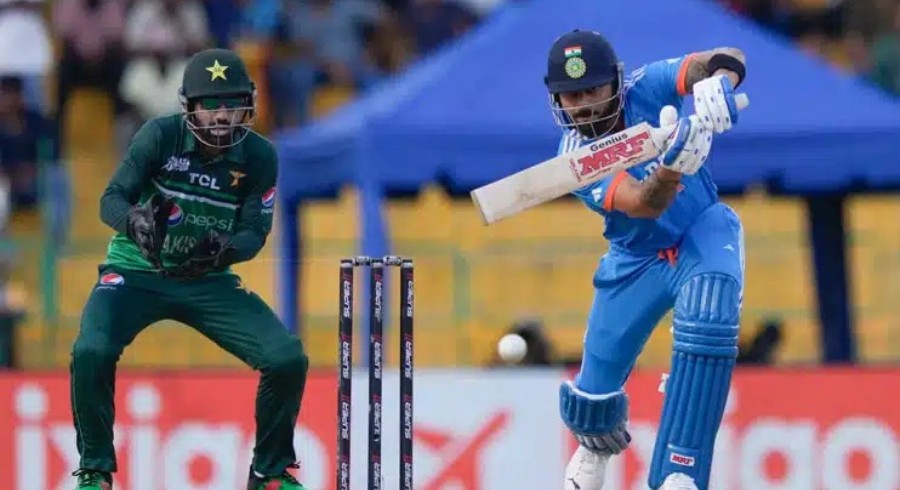The real losers are the fans from both nations
 PHOTO: AFP
PHOTO: AFP
“Please, man, it’s a matter of my honor. If the tournament doesn’t happen, we’ll suffer a loss,” a high-ranking PCB official said to then-BCCI Chief Jay Shah a few years ago. Shah responded, “Alright, let me consult with my board and get back to you.” Eventually, India agreed, and the 2023 Asia Cup was held under a hybrid model in Pakistan and Sri Lanka. It went down in history as one of the worst events ever.
One board official even flew his friends and family on a chartered flight with the team to Colombo. Some officials were punished for their indulgence in “Diet Coke” incidents by being forced to stand outside the President’s Box. Even to this day, billing disputes between the Sri Lankan and Pakistani boards remain unresolved. The weather further spoiled things.
I was in Colombo and never once felt the vibe of a major tournament. Even during the Pakistan-India match, the atmosphere in the stadium didn’t live up to expectations. Rain intervened, though some officials managed to enjoy sightseeing. In one box, gatherings over “Western beverages” became a routine. Later, during the World Cup, our team went to India.
While in Bangalore, a shopkeeper told me sarcastically, “Our country is the Big Boss of cricket. The Indian team will never go to Pakistan, but you people will keep coming here.” That sentiment stayed with me. However, the current PCB leadership, especially Chairman Mohsin Naqvi, has changed this perception.
For years, we’ve been asking each other, “If the Indian team isn’t coming here, why do we keep going there? Have we taken the sole responsibility for preserving cricket events?” When Mohsin Naqvi was appointed chairman, many were shocked at how he was entrusted with such a huge responsibility. PCB media department official Raza Rashid, who was his classmate, remarked, “Mohsin Naqvi has great administrative skills. Whatever task he takes up, he ensures its completion. He’ll handle this responsibility well.”
And that’s exactly what happened.
Regarding the Champions Trophy, PCB seemed oddly confident this time that the Indian team would come to Pakistan. However, this didn’t seem realistic. Cricket can only resume as a means of fostering ties when relations between the two countries normalize, which is likely to happen last. BCCI assumed PCB would once again easily agree to a hybrid model. Messages were relayed through the ICC stating that the Indian team couldn’t visit Pakistan, followed by silence to increase pressure. PCB, however, decided to respond firmly and without panic.
As time passed, ICC’s concerns grew. Jay Shah wanted to resolve the issue before becoming chairman but failed. As the gravity of the matter became clear, negotiations began. Pakistan skillfully played its cards and kept the pressure on India. Some critics claim that the hybrid model was still adopted, so what’s the achievement? These statements may stem from bias against Mohsin Naqvi because, in reality, PCB emerged victorious.
Ask yourself, what could’ve improved to make Narendra Modi allow his team to visit Pakistan? Even a child could tell you that during BJP’s tenure, such an outcome was impossible. Any chairman would’ve had to settle for the hybrid model under these circumstances.
The significant change, however, is that Pakistan secured an agreement ensuring that for the next three years, matches between the two countries in any tournament would take place outside their respective nations. Previously, the traffic was entirely one-sided. Additionally, PCB was granted hosting rights for a women’s tournament, which, while not immensely lucrative, promises some revenue. A tri-nation or four-nation tournament might also be organized. Meanwhile, the Indian board is being criticized domestically for capitulating to Pakistan.
We should also acknowledge that Pakistan’s dignity remained intact. For the first time, PCB asserted its strength, making both the ICC and India realize it cannot be taken lightly. This situation arose due to the Indian government’s stubbornness. If they truly wanted better relations with Pakistan, they would’ve allowed their team to visit.
Even when our team went to India, you may recall the numerous issues regarding visas and other matters. Not a single fan was granted a visa, and the journalists who managed to go could be counted on one hand. When I crossed the border, the gates at Wagah were opened first for Pakistan and then for India, just for me. It wasn’t a moment of pride but of sorrow — neighboring countries with shared borders but divided hearts.
Now, during the 2026 World Cup, the Pakistani team will play its matches in Sri Lanka, so visa issues won’t arise. This also reduces uncertainty before events between Pakistan and India. India is happy that its team isn’t traveling to Pakistan, and PCB is pleased with the fair competition and acceptance of its demands.
However, the real losers are the fans from both nations, who could’ve connected through cricket but will now see the divide will only widen further. Instead of watching Kohli and Rohit in action live, fans will have to settle for watching them on TV. Similarly, Indian fans will only see Babar Azam and Shaheen Afridi playing on their screens rather than in person. This is shameful for cricket, but as long as there is no flexibility in the stance of the Indian government, this is how things will continue.
The views expressed by the writer and the reader comments do not necessarily reflect the views and policies of Cricket Pakistan.